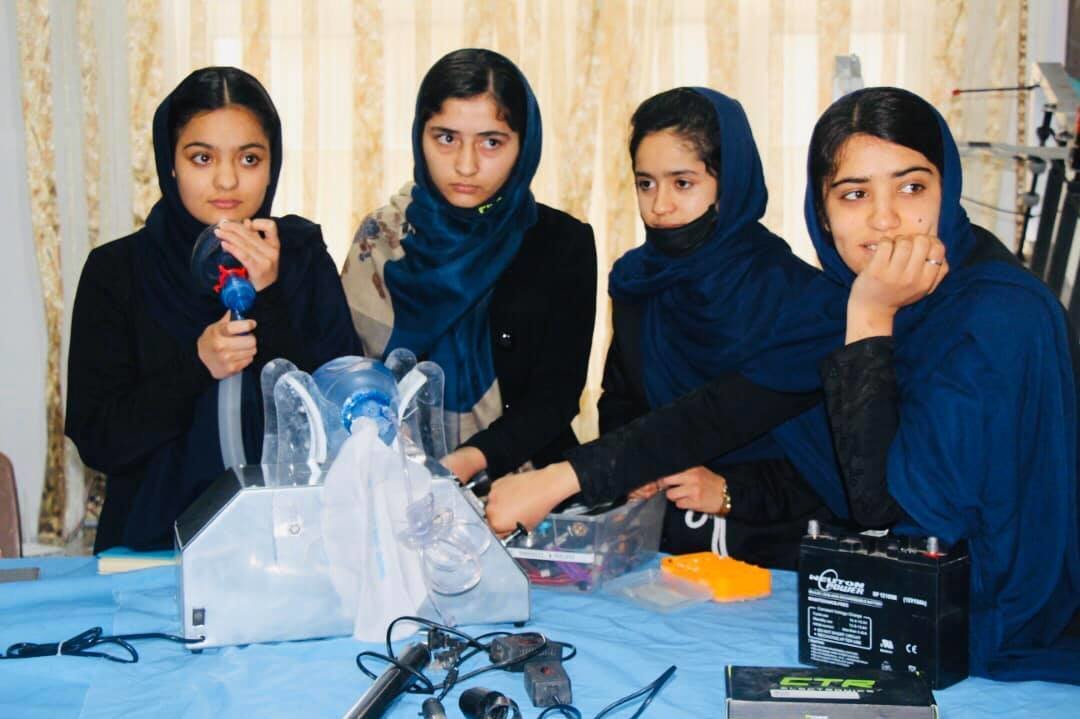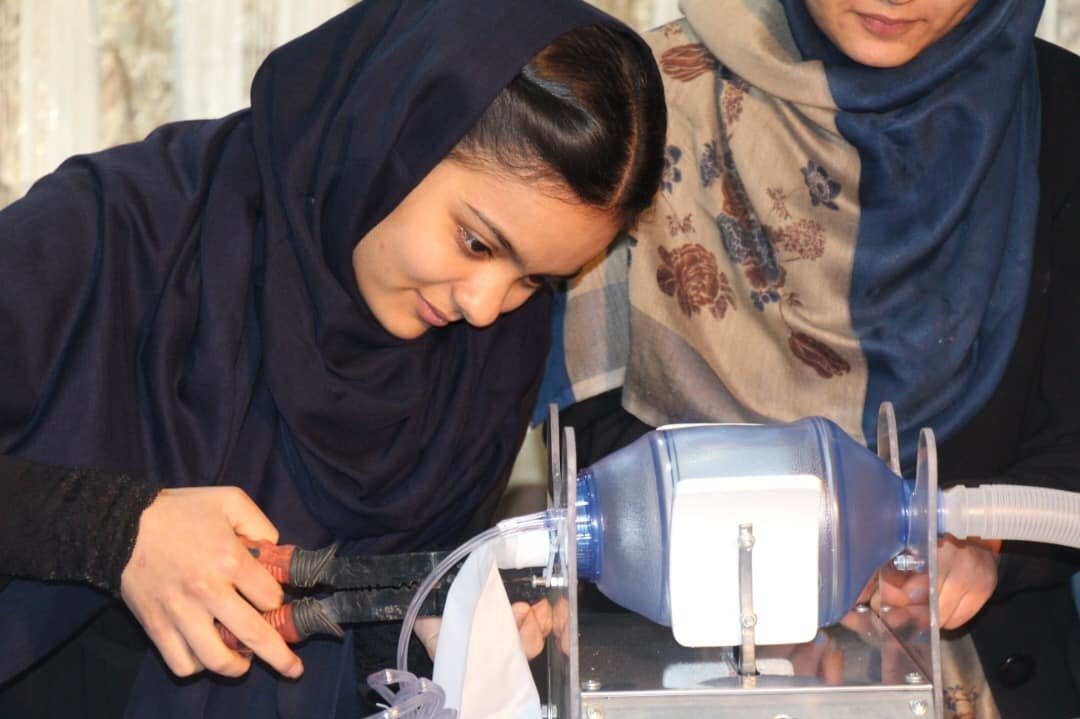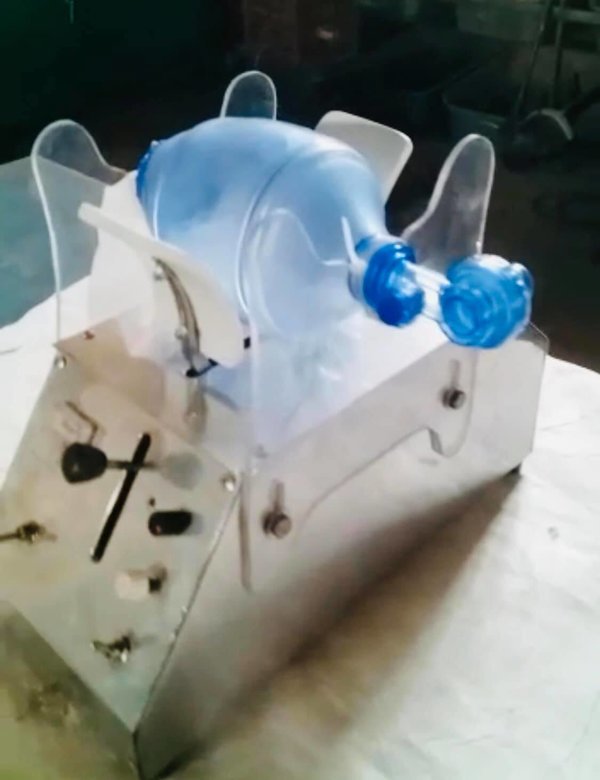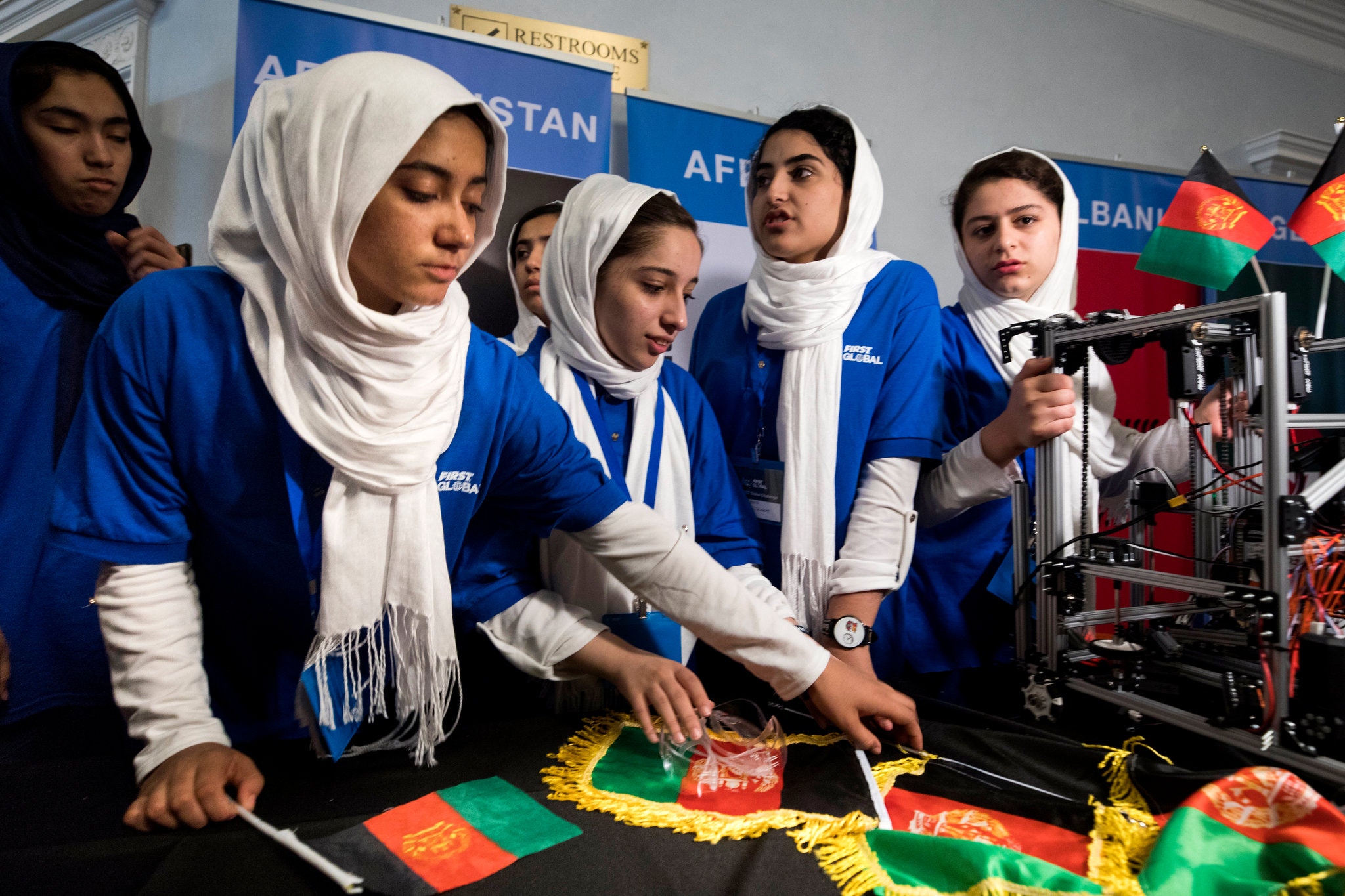- Good Stuff -
- 6mins -
- 177 views
Genius Afghan all-girl robotics team designs low-cost portable ventilator using parts from a Corolla
Award-winning teens’ latest device is easy to carry, can run on battery power for 10 hours, and costs roughly $700 to produce — compared with the $20,000 price of a traditional ventilator.
All-Girl Robotics Team In Afghanistan Unveil Low-Cost Ventilator
Back in March in the eastern Afghan city of Herat, the all-female Afghan Robotics Team—which has won international awards for its robots—began work on an open-source, low-cost ventilator as the coronavirus pandemic hit the war-torn nation. It took the team almost four months to finalise the ventilator, which is partly based on a Massachusetts Institute of Technology (MIT) design, and they received guidance from experts at Harvard University. On 20 July, the seven young women unveiled their ventilator as reported by Reuters. The device is easy to carry, can run on battery power for 10 hours, and costs roughly $700 to produce, compared with the $20,000 price of a traditional ventilator.

device is portable, can run on battery power for 10 hours, and cheap to produce
Although the ventilator still has to undergo final testing from health authorities before it can be used, officials welcome it in a country with only 800 ventilators to treat the fast-growing number of coronavirus cases in a health system damaged by decades of war.
“We are delighted that we were able to take our first step in the field of medicine and to be able to serve the people in this area as well. All members of our team feel happy because after months of hard work, we were able to achieve this result,” Faruqi told Reuters.
Health Ministry spokesman Akmal Samsor said once the ventilators were approved they would be rolled out in Afghan hospitals and the design shared with the World Health Organization.
“We appreciate the initiative and creativity in Afghanistan’s health sector…after they are approved, we will use these ventilators and we are determined to contract with companies so we can also export them,” he said.
Afghanistan has recorded around 35,500 COVID-19 cases and 1,181 deaths, though experts warn the true count is probably far higher due to low testing rates.
Source: Reuters

deliberately low-tech design can be replicated using locally sourced products around the world
The team of some dozen girls aged 15 to 17 was formed three years ago by Roya Mahboob, an Afghan tech entrepreneur who heads the Digital Citizen Fund, a group that runs classes for girls in STEM and robotics and oversees and funds the Afghan Dreamers.
"I’m really proud of these young girls – [who are] feeling that they have to help their community," Mahboob told NPR in May. "It’s amazing and hopeful for the future of Afghanistan."
The doctors presented them with a challenge: to help mechanize their hand-operated ventilators, also known as bag-valve-masks. This type of ventilator is a large inflatable bag attached to a mask that slips over the nose and mouth. A health worker manually squeezes the bag to get air into the lungs. They’re quite cheap and common – they’re used in ambulances and in emergency care to help patients breathe until they can be ventilated on a machine.
Officials feared there would not be enough health workers to hand-operate the equipment in the event of an outbreak. They hoped the Afghan Dreamers could build a prototype of a mechanised ventilator that could be replicated and mass produced, says Mahboob.
And amid a global demand, officials also worried that impoverished Afghanistan could not compete with wealthy countries to buy fully automated ventilators typically used in ICU rooms.
A team of four Afghan Dreamers began looking online for open-source design ventilators. Mahboob and Somaya Farooqi, the 17-year-old team captain, came across a design released by MIT for a low-cost, low-tech ventilator called the MIT E-Vent.
"They found us," says Alexander Slocum, a professor of mechanical engineering at MIT, whose team released the design in March.
The design is deliberately low-tech so it can be replicated using locally sourced products around the world. For instance, it calls for installing a microprocessor, usually included in robotics kits for kids and teens. And it can be built out of widely available machine parts.
Source: npr.org

The Afghan Dreamers faced a number of challenges while building the prototype
For one, they were working while fasting during the Muslim month of Ramadan. They also had to keep safe amid the pandemic, says Farooqi. "Each of us work on a separate part of the ventilator. When we get together, we wear masks and gloves."
And because Herat was largely shut down due to COVID, Farooqi says the team had to be ingenious about sourcing parts. "Most of the material we are using is actually from Toyota Corolla car parts" from nearby secondhand markets, such as the windshield wipers, a gear box and motor, along with some motorbike parts.
Corollas are a common type of car in Afghanistan, so if this prototype gets approval, the ventilator should be cheap and easy to replicate using parts likely to be available at car shops, says Mahboob.
Once the team has their successful prototype tested and approved by the health ministry in Herat, and then in the capital Kabul, local factories can replicate the machine. However, the team is optimistic and they’ve overcome other hurdles in the past.
The team first came to international attention three years ago, when they were refused visas twice to enter the U.S. for a robotics competition. Many visit visas are denied because some Afghans have used them to stay in the U.S. and never return to Afghanistan. After an international outcry, President Donald Trump intervened and let them in.
They made it to the competition and even won an award for courage for their can-do attitude under difficult circumstances.
"That award was a result of our hard work. And it’s made us work even harder," said Farooqi. Speaking of the ventilator her team is building, she adds, "even if it saves just one patient’s life, I’ll be happy.”
Source: npr.org




